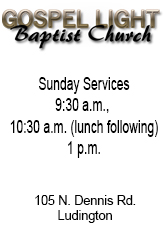
Coast Guard and shipyard personnel inspect the Undaunted
This Great Lakes Boat Blog is a presentation of Filer Credit Union, with offices in Manistee, Ludington and Bear Lake, www.filercu.com and the Mason County Historical Society’s Port of Ludington Maritime Museum, ludingtonmaritimemuseum.org, located at 217 S. Lakeshore Dr., Ludington.
By Rob Alway, Editor-in-Chief
STURGEON BAY, Wis. — Late in the evening on Monday, Oct. 6, 2025, the articulated tug/barge Undaunted/Pere Marquette 41 arrived at the Fincantieri Bay Shipbuilding shipyard for its five-year U.S. Coast Guard inspection. As part of the inspection process, both vessels were placed into dry dock.
MCP Contributing Writer Mark Varenhorst and myself had the opportunity to cover the dry docking. Unfortunately, we had to leave before the Pere Marquette 41 barge was placed into dry dock, but the experience was still a great opportunity to present to photographs to the MCP readership.
Commercial vessels must be inspected every five years by the U.S. Coast Guard. The process is a comprehensive check to ensure a vessel remains in satisfactory condition and complies with safety regulations. It involves both external and, if possible, internal examinations of the vessel’s structure, machinery, and equipment to ensure it is fit for service. A new Certificate of Inspection is issued upon successful completion, which is valid for five years.
The dry docking is also an opportunity to make repairs and upkeep on a vessel. In this case, the Undaunted tug was scheduled to receive a new propeller.

PM 41 in dry dock. Submitted photo, ILS.
The tug/barge is based out of Ludington and owned by Interlake Logistics Solutions, a subsidiary of Interlake Maritime Services of Middleburg Heights, Ohio, the same company that owns Lake Michigan Carferry, which operates the S.S. Badger. Both companies are under the leadership of Chuck Leonard of Ludington.
Visiting the shipyard at that particular moment was pretty exciting for this boat nerd/maritime historian. Three of the vessels were built during World War II: Pere Marquette 41 (built as a carferry in 1941); Undaunted (built as a U.S. Navy tug in 1943); and USS Cobia (built as a U.S. Navy submarine in 1944). Additionally, the tug/barge Spartan/Spartan II, based out of Ludington, was in for service (read more about the tug/barge here) along with the State of Michigan training vessel owned by the Great Lakes Maritime Academy.
On Tuesday morning, Mark and I boarded the Badger in Ludington and arrived in Manitowoc, Wis. shortly before noon (CST). We arrived at the ship yard later that afternoon, just in time to observe the Undaunted being prepared to be moved into dry dock.
Most of the crew was heading for a van that was taking them back to Manitowoc to catch the Badger back to Ludington.
The Undaunted then moved to a graving dry dock. A graving dry dock is a large, excavated basin in the ground that is flooded to allow a ship to float in it. This particular dock is an old ship’s hull. The boat was brought in and tied up, and then the gates are sealed shut and the draining begins. The crew of Bay Ship (as the dock is locally referred to) are experts at their craft and work in one coordinated and efficient effort. For an observer who has never witnessed this, it’s an amazing process. For them, it’s just their job and they do it well.
By Wednesday morning, the graving dock was empty and the Undaunted was shored up. Mark and I arrived at the shipyard at the same time as the three U.S. Coast Guard inspectors. We were able to watch the coasties perform their exterior inspections of the boat’s hull, and then we were able to walk around on the floor of the graving dock. It’s rather humbling, a little unnerving, and intriguing, to walk underneath a 143-foot vessel.
We had originally planned to return to Ludington via the Badger on Friday, knowing that dry docking of the PM 41 was to take place Thursday. When I awoke Thursday morning, I checked the marine weather and noticed that Friday’s forecast was calling for waves 6-10 feet. Mark called Chuck Leonard and asked if we should consider changing our return date to that afternoon. Chuck said it probably wouldn’t be a bad idea. A seasoned mariner, Chuck knows Lake Michigan and knew that he was likely going to cancel the Friday sailing of the Badger — which he ultimately did later that day.
Though we didn’t get to see the PM 41 in complete dry dock, we did get to see her being moved into the floating dry dock. The coordination between the dock workers and the tug operators is just seamless.
Undaunted/PM 41 are part of the Ludington car ferry story
Many in Mason County may not realize the significance of the Undaunted/PM 41. The story of Lake Michigan Carferry and the legacy of Charles Conrad saving the car ferry operation in 1991 is often told from the perspective of the Badger. But, two other car ferries were part of the sale of LMC, and both of those car ferries have helped sustain car ferry service out of Ludington since it was revamped and reinvented in 1992.
To tell the story of the Undaunted/PM 41, I think it’s important to provide a brief history of the Ludington car ferries.

The Undaunted
Cross lake freight service began out of Ludington to Wisconsin in 1875 — a year after the Flint & Pere Marquette Railway reached Ludington. For 22 years, the railroad utilized break-bulk freighters; railcars were unloaded at the dock and the freight was then loaded onto the steamers and shipped across Lake Michigan.
In 1897, the steel S.S. Pere Marquette was the first car ferry built for the Flint & Pere Marquette Railway. In 1900, the Flint & Pere Marquette Railway and two other railroads were consolidated into the Pere Marquette Railway. An additional ship, the wooden Muskegon, was added to the fleet. The Pere Marquette was then renamed the Pere Marquette 15, and the Muskegon was renamed Pere Marquette 16.
The fleet grew with the addition of the 17 (1901), 18 (1902), 19 (1903) and 20 (1903). The 18 sank in 1910 and a new one was built in 1911. The 21 and 22 were added to the fleet in 1924, then the City of Saginaw 31 (1929) and City of Flint 32 (1930).
By the 1930s, the car ferry service from Ludington operated to Wisconsin ports of Milwaukee, Manitowoc, and Kewaunee.

Towing the PM 41 to dry dock
Then came the “Queen.”
In 1941, the City of Midland 41 made her debut. Like the 21, 22, 31, and 32, she was built by Manitowoc Shipbuilding Co. in Manitowoc, the last car ferry to be built there and the last one built for the Pere Marquette Railway. In 1947, the PMRR merged with the C&O Railroad.
The only two Lake Michigan car ferries built for the C&O were the Spartan and the Badger. They were both built by Christy Corp. in Sturgeon Bay. Christy Corp. was a predecessor of the modern Fincantieri Bay Shipbuilding.
The Spartan debuted in October 1952 during a car ferry employees strike. The Badger debuted in March 1953. The two vessels were nearly identical. In the 1960s the Badger’s car deck was raised 18 inches to accommodate higher rail cars. There were plans to raise the Spartan’s car deck as well until the railroad decided to exit the car ferry business. More efficient rail traffic through Chicago made direct rail service more viable rather than shipping across Lake Michigan. But, the abandonment process would take over a decade to accomplish.
By the mid-1970s, the three newest vessels were all that remained of the once mighty Ludington car ferry fleet, the largest ever on the Great Lakes.
On July 1, 1983, the Chessie System, which included the C&O, ended its car ferry service and sold the remaining three ships, the City of Midland 41, Spartan and Badger, to Ludington businessmen Glenn Bowden and George Towns who had formed Michigan-Wisconsin Transportation. The intent of M-WT was to continue cross-lake rail service out of Ludington with Kewaunee as the primary Wisconsin port utilizing the 41. The Badger was operated seasonally for two seasons from Ludington to Milwaukee.
 In 1987, U.S. Coast Guard inspections showed that the 41’s boiler mounts had deteriorated and needed replacement. The repairs were waived a year but in 1988, MWT made the decision to lay her up and utilize the 410-foot Badger.
In 1987, U.S. Coast Guard inspections showed that the 41’s boiler mounts had deteriorated and needed replacement. The repairs were waived a year but in 1988, MWT made the decision to lay her up and utilize the 410-foot Badger.
Following the bankruptcy of MWT, the three vessels were then purchased by retired Holland businessman Charles Conrad, a native of Ludington, in 1991 with the formation of Lake Michigan Carferry. Conrad partnered with Ludington businessmen Don Clingan and Jim Anderson.
However, the Badger remained as flagship while the Spartan and Midland remained moored. The Spartan was spared from conversion because she was a nearly identical twin to the Badger and used for parts.
In 1993, Conrad turned over operations of LMC to his son-in-law Robert Manglitz; Conrad passed away on Feb. 9, 1995. In 1996, Manglitz tasked Badger First Mate Ed Wiltse with finding a way for the 41 to be utilized again, and provide an additional revenue stream for the company.
“In the winter of 1996, we came up with the idea of converting the 41 into a barge,” Wiltse, who has been captain of the Badger since 2023, said. “There was a need for a bulk ship to handle materials that the larger self unloaders couldn’t handle, a niche market for a vessel.”
 The concept was to convert the City of Midland 41 into a barge and pair it with a tug creating an articulated tug/barge operation that would be called Pere Marquette Shipping. Wiltse was named executive vice president and chief operating officer. His assistant was Chuck Leonard, who began working for MWT car ferry operation in 1986.
The concept was to convert the City of Midland 41 into a barge and pair it with a tug creating an articulated tug/barge operation that would be called Pere Marquette Shipping. Wiltse was named executive vice president and chief operating officer. His assistant was Chuck Leonard, who began working for MWT car ferry operation in 1986.
After the financing was secured, the 41 was towed away from Ludington harbor to Muskegon on Oct. 1, 1997 where its superstructure was reduced and renamed Pere Marquette 41.
Wiltse then needed to find a tug to accompany the barge. He found the MT Undaunted in Escanaba.
The 143-foot long Undaunted was laid down in November 1943 by Gulfport Boiler & Welding Works in Port Arthur, Texas as ATR-126 for assault towing rescue duty. On Aug. 22, 1944 it was launched and reclassified as an auxiliary fleet tug. It was commissioned on Oct. 20, 1944 as ATA-199.
It operated with two Cummins K38-M engines.

Inspecting the Undaunted’s propeller
Following its shakedown at Galveston, Texas, the tug was sent to New Orleans on Nov. 18, 1944. It rendezvoused with a convoy bound for the Panama Canal with sections of an advance base dock in tow.
The dock, AFDB-5 was a nine-section, non-self-propelled large Navy auxiliary dry dock that was constructed in sections in 1943 and 1944 by the Chicago Bridge & Iron Co. in Morgan City, La. With all nine sections it was 825 feet long. The other boat assisting in the tow was St. Simon.
The tugs arrived at the Panama Canal and pulled various units of the dock through the canal for two weeks. They then departed and ATA-199 served as a retriever tug. The convoy crossed the Pacific Ocean and arrived in Leyte, an island in the Philippines, on Feb. 24, 1945 with assembly completed in May 1945.
ATA-199 operated in Leyte Gulf on March 23, 1945 when she departed Pedro Bay towing fleet ocean tug Serrano (ATF-112) and arriving at Ulithi, an atoll on the westernmost end of the Caroline Islands, 360 miles from Guam, four days later, joining Service Squadron 10.
The ATA-199 then operated in the Philippines, Marianas, Carolines, Solomons, and Admiralties towing a variety of naval vessels. In June and July 1945, she towed pontoon barges from the Russell Islands to Okinawa, Japan. On July 29, 1945, she departed Okinawa en-route to San Francisco, towing the destroyer U.S.S. Hugh W. Hadley (DD-774), which had been damaged by a kamikaze attack.
 The tug was then sent to Pearl Harbor in November 1945 and operated there until April 11, 1946 when she departed with a section of ABSD-7 in tow to Norfolk, Va. The tug was eventually sent to New Orleans and operated there until June 24, 1947 when she was sent to Beaumont, Texas for inactivation overhaul. She was decommissioned in Orange, Texas on Aug. 25, 1947 and assigned to the Texas Group, Atlantic Reserve Fleet.
The tug was then sent to Pearl Harbor in November 1945 and operated there until April 11, 1946 when she departed with a section of ABSD-7 in tow to Norfolk, Va. The tug was eventually sent to New Orleans and operated there until June 24, 1947 when she was sent to Beaumont, Texas for inactivation overhaul. She was decommissioned in Orange, Texas on Aug. 25, 1947 and assigned to the Texas Group, Atlantic Reserve Fleet.
On July 16, 1948, the tug was re-named Undaunted and transferred to the custody of the Maritime Administration. In 1963, her name was struck from the Navy list and was later transferred to the Bureau of Commercial Fisheries. She was loaned as a training vessel to the U.S. Merchant Marine Academy in Kings Point, NY and renamed the TV Kings Pointer.
In 1993, the Kings Pointer was sold to Basic Towing of Escanaba and was renamed Krystal K. The company kept the tug laid-up at its Escanaba yard.
In 1998, Pere Marquette Shipping purchased Krystal K and renamed her Undaunted. That year, Basic Marine rebuilt the tug, widening it, and also adding a new, raised pilothouse along with a hydraconn coupler system.
The 41’s history is equally as extensive and impressive. It has been published several times in various newspaper articles and books and will likely be published again on the pages of MCP and Great Lakes Boat Blog.
In 2020, the tug/barge operation was sold to Interlake Maritime Services and the company was renamed Interlake Logistics Solutions, continuing to be based out of Ludington.
The Undaunted/PM 41 is expected to return to service in about another week. It will continue to operate through the end of the shipping season, usually early January.
To read more about the Undaunted/Pere Marquette 41, visit the articles in this Working the Lakes: Undaunted/PM 41 series:
Part 3: Keeping the tug Undaunted maintained

Filer Credit Union features offices in Manistee, Ludington and Bear Lake, 800-595-6630, www.filercu.com

The Mason County Historical Society is a non-profit charitable organization that was founded in 1937 that does not receive any governmental funding. It owns and operates the Port of Ludington Maritime Museum in Ludington, Historic White Pine Village in Pere Marquette Township, and The Rose Hawley Archives and the Mason County Emporium and Sweet Shop in downtown Ludington.
The Port of Ludington Maritime Museum, located at 217 S. Lakeshore Dr., Ludington, is currently open Thursday through Saturday from 10 a.m. to 5 p.m. until Tuesday, May 27 when it will be open Tuesday from 11 a.m. to 7 p.m. and Wednesdays through Saturday from 10 a.m. to 5 p.m.
For more information about donating to and/or joining the Mason County Historical Society, visit masoncountymihistory.org.
______________________
Please Support Local News
Receive daily MCP and OCP news briefings along with email news alerts for $10 a month. Your contribution will help us to continue to provide you with free local news.
To sign up, email editor@mediagroup31.com. In the subject line write: Subscription. Please supply your name, email address, mailing address, and phone number (indicate cell phone). We will not share your information with any outside sources. For more than one email address in a household, the cost is $15 per month per email address.
We can send you an invoice for a yearly payment of $120, which you can conveniently pay online or by check. If you are interested in this method, please email editor@mediagroup31.com and we can sign you up. You can also mail a yearly check for $120 to Media Group 31, PO Box 21, Scottville, MI 49454 (please include your email address).
Payment must be made in advance prior to subscription activation.
We appreciate all our readers regardless of whether they choose to continue to access our service for free or with a monthly financial support.
_____
This story and original photography are copyrighted © 2025, all rights reserved by Media Group 31, LLC, PO Box 21, Scottville, MI 49454. No portion of this story or images may be reproduced in any way, including print or broadcast, without expressed written consent.
As the services of Media Group 31, LLC are news services, the information posted within the sites are archivable for public record and historical posterity. For this reason it is the policy and practice of this company to not delete postings. It is the editor’s discretion to update or edit a story when/if new information becomes available. This may be done by editing the posted story or posting a new “follow-up” story. Media Group 31, LLC or any of its agents have the right to make any changes to this policy. Refer to Use Policy for more information.


















































.png)

